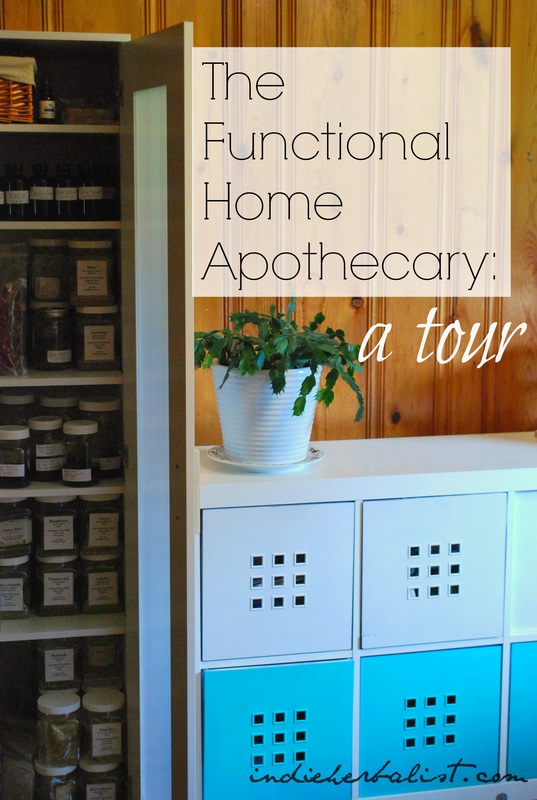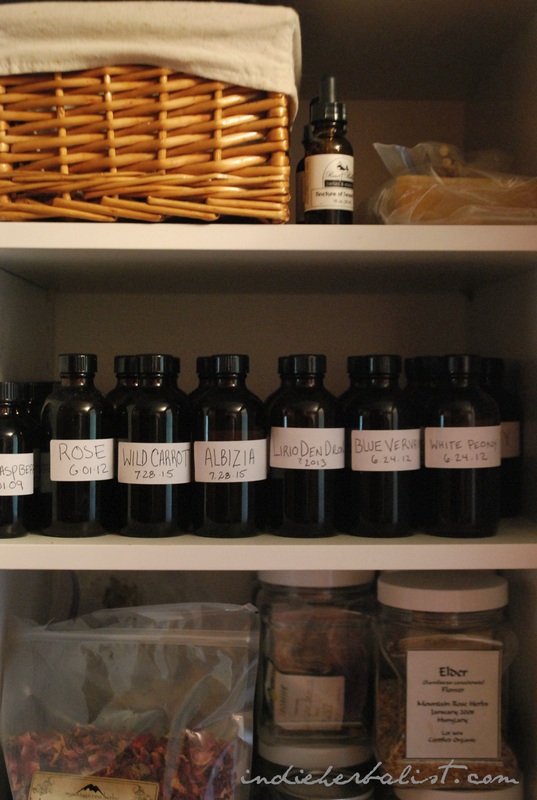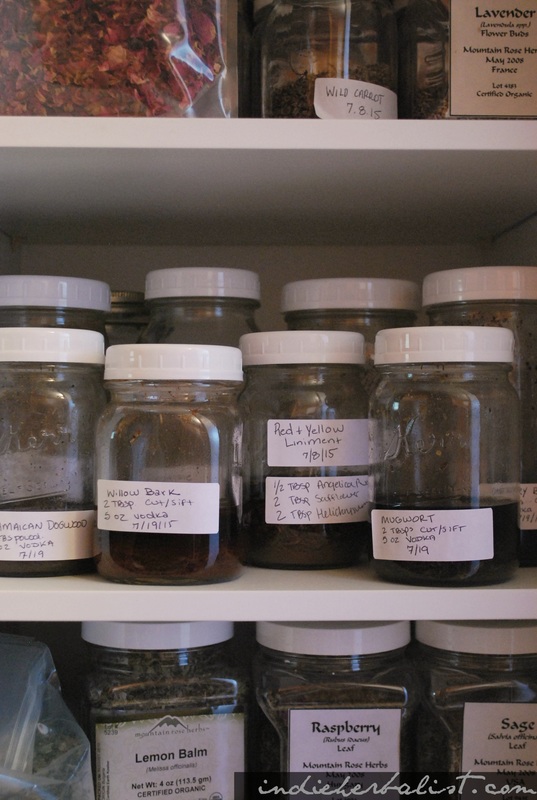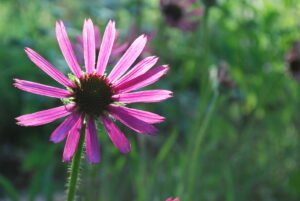Links contained in this post and elsewhere on my website may include affiliate links. When you make a purchase through these links, I earn a commission at no additional cost to you. I only link to products and services that I love - and that I think you will love, too!
I’ve been writing a series of articles over at the Herbal Academy of New England blog that cover different options for building and working with a home apothecary. A lot of people seem to be enjoying them, so I thought you might also enjoy a quick tour of my personal home apothecary. Most of the info in the Academy articles comes from my personal experience, so now you can see a little more about behind the scenes!
So, yes! This is the herb pantry / household apothecary at my house- my stash of play-pretties, my medicine chest. You could walk into any room in my home and probably find something herbal without having to try terribly hard, but this is the main hub. It does its job beautifully, keeping light away from my dried herbs and keeping me (more or less) organized.
I keep many vodka based extracts on hand for their long shelf-life and simplicity of use. It also makes it easy to mix and match to create formulas or whip up a customized blend whenever I need it. I have extracts that are almost ten years old and still in great shape, so it’s definitely a good investment. Around here, we’re very fond of the four oz. size, which is far and above what we need for our normal everyday needs and leaves plenty left over for sharing or emergencies. There’s a block of beeswax on the top shelf, along with Rare and Babbit’s Teasel Root Extract, some licorice roots, and a basket with other odds and ends and some 1oz extracts.
You’ll notice a distinct absence of dropper tops on my bottles. I hate the evil little things. Remember that ¼ teaspoon is equivalent to 30drops, and you’ll never have to worry about a clogged dropper, a defective rubber bulb, a contaminated extract, or a stuck-to-the-rim gasket again.
Cost is the main reason I make so many of my own extracts, but I also just really love the process of it. There’s almost 60oz in a 1.75 litre of vodka, and I can find that size for $20 without going to much trouble. Thirty cents an oz isn’t bad at all, and although the upfront cost of vodka, a few ounces of the herb, and glass bottles may seem a little steep, by the time you average it out you’ve made 4oz of extract you’ve beaten the store prices by quite bit. I estimate that most of my 4oz extracts cost less than $3 to make. That’s much better than the $12-15 per oz on store bought.
Reusable plastic tops for your jars are a must if you use glass canning jars for your extracts. I love mine. They are so simple to clean between uses and you never have to worry about the rust on your metal bands and lids that can happen if you are using vinegar.
The herbs in my home apothecary come from several places. I’m fortunate that I can grow some, or raid the gardens and yards of friends and family members. That’s wonderful for things like violets, albizia, honeysuckle, and monarda. Culinary herbs like sage and basil, too. I supplement these herbs with purchases online, mainly from Mountain Rose Herbs. There are several good online herbal suppliers now, but I love Mountain Rose because of their social and environmental focus. I’ve always been extremely pleased with their quality and customer service, too.
Overall, I like to keep 1-oz extracts, beeswax and other tools on the top shelf, 4 oz extracts below that, and then my current extracts-in- progress on a shelf to themselves. Herbs are organized with flowers and berries on one shelf, leaves and stems next, and then roots and barks on the bottom.
The storage cubbies by the cabinet hold my larger herbal supplies like grinders, cutting boards, dedicated enamel pots and mixing and measuring tools. I have another small shelf off to the side where I keep clean, empty jars so I can see what I have at a glance, and my desk is across from all of this in another corner. The storage cubbies are the perfect height to pull double duty as a counter top for working on my herbal projects or as standing desk for working on my laptop. Also, it’s on wheels to make clean up a cinch!
If you’d like to read my other apothecary articles for the Academy, you can check them out here:
The Art of the Alcohol Free Apothecary
Creating Your Organized Apothecary
Local Herbs for the Home Apothecary
PS- In case you missed it, the Academy will be releasing their online Advanced Herbal Learning Course this fall! I’m part of the course development team. I’ve contributed 5 of the lessons, and since I’m part of the writing team I’ve had a sneak peek at everything behind the scenes. It’s going to be a fantastic resource for the herbalists interested in getting serious about developing their own herbal practice or business! The Introductory and Intermediate courses are just as worthwhile- and hey, I help out on the Intermediate forums, so if you decide to enroll, be sure to let me know! I love seeing what our students are up to and helping with questions that you may have as you work through the course.
If you’d like to show off your own home apothecary, leave me a link in the comments below and I’ll stop by to say hello!



